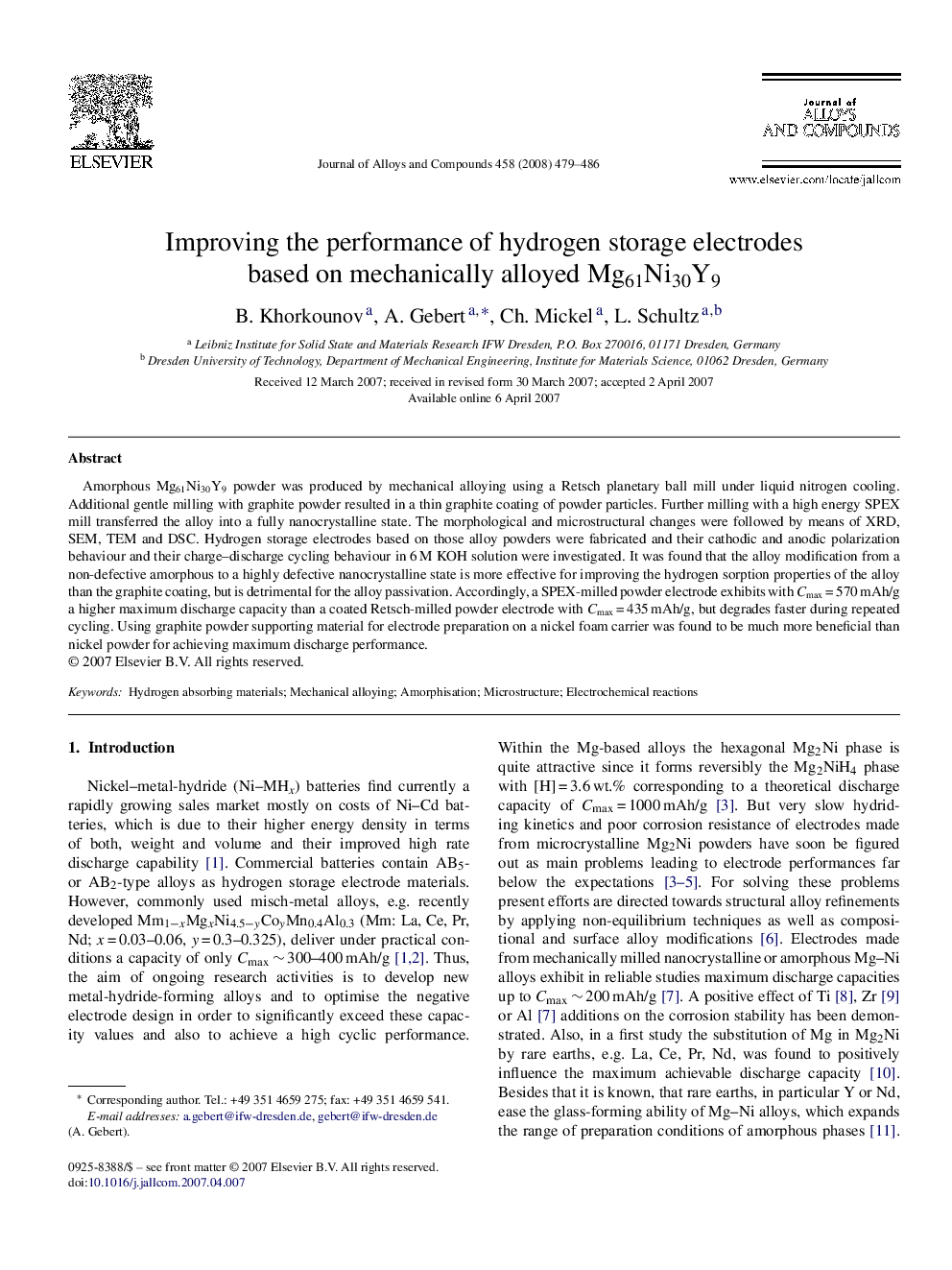| Article ID | Journal | Published Year | Pages | File Type |
|---|---|---|---|---|
| 1624448 | Journal of Alloys and Compounds | 2008 | 8 Pages |
Abstract
Amorphous Mg61Ni30Y9 powder was produced by mechanical alloying using a Retsch planetary ball mill under liquid nitrogen cooling. Additional gentle milling with graphite powder resulted in a thin graphite coating of powder particles. Further milling with a high energy SPEX mill transferred the alloy into a fully nanocrystalline state. The morphological and microstructural changes were followed by means of XRD, SEM, TEM and DSC. Hydrogen storage electrodes based on those alloy powders were fabricated and their cathodic and anodic polarization behaviour and their charge-discharge cycling behaviour in 6 M KOH solution were investigated. It was found that the alloy modification from a non-defective amorphous to a highly defective nanocrystalline state is more effective for improving the hydrogen sorption properties of the alloy than the graphite coating, but is detrimental for the alloy passivation. Accordingly, a SPEX-milled powder electrode exhibits with Cmax = 570 mAh/g a higher maximum discharge capacity than a coated Retsch-milled powder electrode with Cmax = 435 mAh/g, but degrades faster during repeated cycling. Using graphite powder supporting material for electrode preparation on a nickel foam carrier was found to be much more beneficial than nickel powder for achieving maximum discharge performance.
Keywords
Related Topics
Physical Sciences and Engineering
Materials Science
Metals and Alloys
Authors
B. Khorkounov, A. Gebert, Ch. Mickel, L. Schultz,
